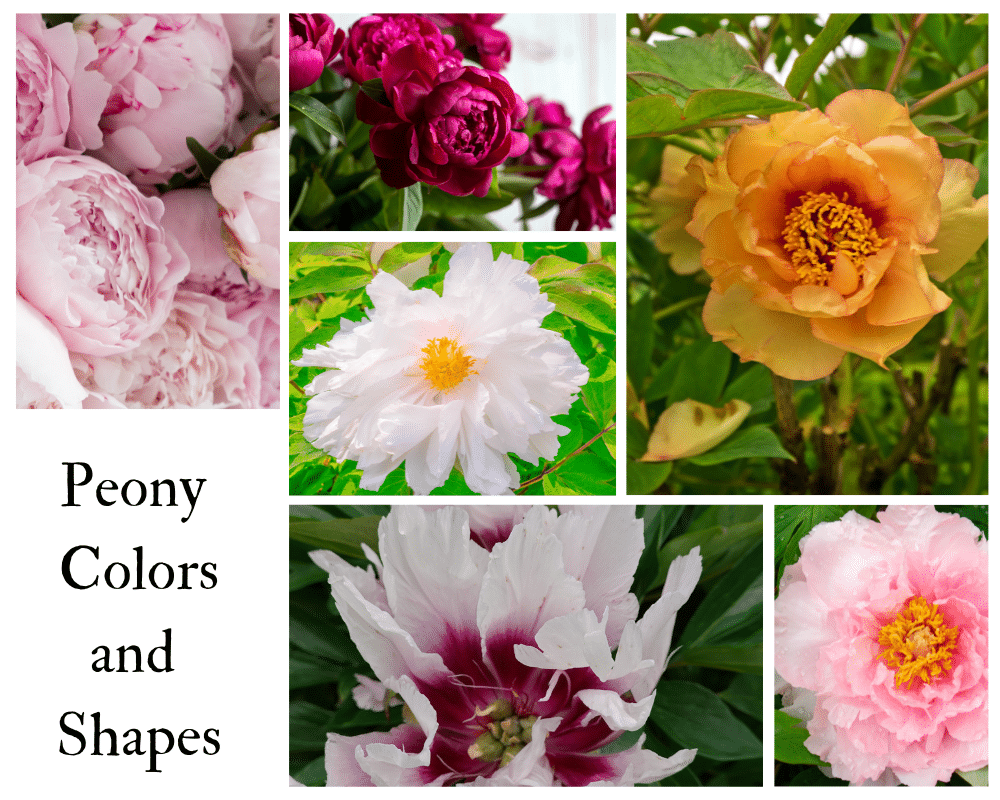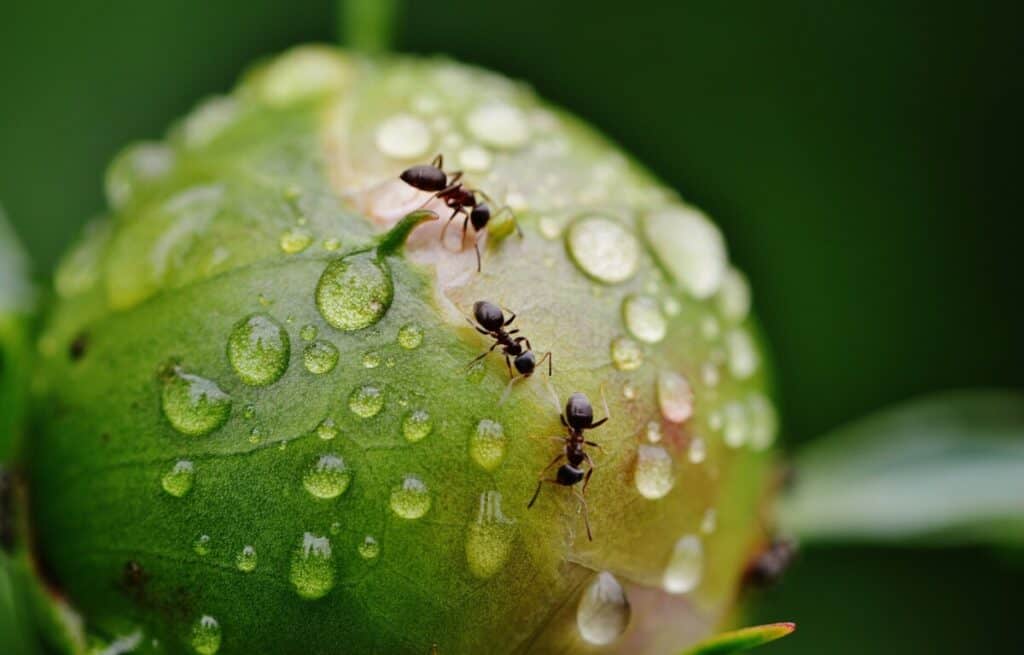“Roses As Big As Cabbages”!-Marco Polo
Peonies-Here is why we want them. They produce enormous, lush blooms in a myriad of colors, both vivid and pastel. If you like them, you might have them for 100 years. They are so outstanding in their mass and beauty that when Marco Polo first saw them on his travels, he called them “roses as big as cabbages!“
A Flower To Inherit
You may have thought that you would leave the homestead to the kids, but perhaps never thought you could leave the actual flowers growing in it! Peonies last for decades, in some cases over a century!
This is not a quick fix at the garden center, gardeners plan for, and save up for Peonies. Plant the economical tubers starting in early fall, you should see mounding plants and some blossoms next spring, they should be fully grown, and permanent residents two years after that. Peonies are an absolute long-term investment in your garden.
Peonies-A Quick Reference
I make these data tables because they can tell you quickly if you can grow a plant in your hardiness zone and garden. We, in our family, are long-term Peony lovers, but now as South Florida gardeners, we are out of luck in the Peony department. They will not grow in our climate! This chart should save you some time.

Other charts you can use.
In Fall Invest in the Garden (A list of Perennials to plant in fall. Culinary Herbs (detail on a list of culinary herbs with links to more information.

Three Major Varieties Of Peonies-‘Roses as Big as Cabbages’
Herbaceous Peonies
When people discuss peonies, this is most likely the one they mean.
Growing about two feet tall in mounds of foliage with many large blooms. They are hardy in zones 2-9, are drought tolerant, and are planted from tubers.
You can plant peonies in spring, but fall is by far the best option. Put the tubers in the ground in autumn when the ground is still warm, they will have weeks to develop their roots which is the plant’s first season job. This way you can see planting opportunities in the garden at its best and you will jump start your career with these amazing flowers, These are true, herabacious plants, and die back every year, reemerging in the spring.
Tree Peonies
This is a woody plant, long lived and slow to get started. At four to six feet high they give structure to the garden and bloom about three weeks later than the spring/summer blooming herbaceous peonies. Combining both in the garden will extend the peony bloom period.
Intersectional Peonies (Itoh Peonies)
This is a hybrid plant, developed from the herbaceous and tree peony. They have short stems and require no support. They will be pruned to the ground like the herbaceous peony, and bloom about three weeks later than the herbaceous. These were developed at a considerable effort by the Japanese horticulturalists Dr Toichi Itoh.
Once established, Itoh peonies have an extended bloom period, being able to produce as many as 50 blooms in one season. They can reach 3′ in height and require a rich soil.
How Where I Live Affects The Peonies I Choose
Herbaceous peonies grow in zones 3-8 but my location will affect how I plant them and the varieties I choose.
They thrive in full sun in shorter and cooler seasons.
In the deep south where we gardened for a while, the early blooming peonies do best. Enjoy the lush blossoms before the full heat of summer arrives. Ensure these features in your garden for success
- Select a location with the sun in the morning but dappled afternoon shade
- Ensure that the soil is well amended with compost and drains promptly
- Plant the tuber with the top eye (bud) only one inch from the surface, rather than two inches.
This website is totally devoted to growing peonies in the south. Have a good look at the tables of varieties to growl
In the colder summers of zone tree, choose later blooming peony varieties which begin after the summer has warmed up.
In zones 5-8 choose from any of the varieties.
How To Grow Peonies
Plant Peonies in Fall
Why We Plant Them In Fall
Peonies planted as thrifty tubers in fall will produce plenty of foliage in spring and possibly a few blossoms. Those planted next spring, will go into cold ground and not show a bloom for yet another year.
Pllant in August through October, and November in a mild climate.
Many perennial plants, trees, and shrubs can be planted in either fall or spring, The Peony is one case in which fall planting is distinctly advantageous. Peonies are a good value as they have extraordinarily long lives, but they are not inexpensive. Plant the tubers in fall and save. Use full potted plants for spring planting to get instant color.
Recommendations For Beginners
This list has been prepared by the American Peony Society, it is a list of tried and true varieties that the society recommends as starting plants for beginners.
How To Plant The Tubers
Buying your Plants
You will probably buy directly from one of the growers and receive a package of sticks in the mail. If that is what it looks like, you have got the right box! The planting instructions from the growers are usually excellent. Here is how it works.
The tubers wil be from plants that are at least three years old. Some rare varieties have been grown for years, This is a hint as to why Peonies are expensive.
Dig a deep hole in well-drained soil. Dig down about two feet deep and two feet across. If the soil is heavy, amend it with organic matter. Space the plants two feet apart allowing for the bushes to spread and have healthy airflow. The plant will have perhaps 3 or more “eyes”or buds. They may appear pink. the bottom of the tuber will appear rounded,
Plant the tuber so that the highest bud is no more than two inches from the surface of the soil. Planting too deep can prevent blooms from appearing! In warm climates in which some shade is provided, you can plant closer to one inch below the soil. Do not cover with heavy mulch. Backfill the hole carefully and water thoroughly.
Maintaining Peonies
As the flowers bloom deadhead the blossoms. Cut with a sterilized tool directly above the first full set of leaves. This will improve the plant appearance but will not stimulate new growth.
In fall, once the foliage turns yellow, cut the stems back close to the ground. This will help to avoid foliar diseases and reduces the opportunity for infections next year.
They do not need to be divided for the health of the plant. You can do so after a few years if you wish to create more plants.
Fertilizer and Water
Peonies benefit from fertilizing early in spring. Use a bulb fertilizer, a perennial fertilizer, something rated 10-20-20. They are reasonably drought tolerant requiring about one weekly watering.
Pests and Diseases
Peonies are not troubled by many problems. Diseases tend to be fungal in nature and arise from wet growing conditions. Spend time choosing the best location with excellent drainage. Ammend the soil if needed.
On the round bud, you should see ants. They are attracted by sweet nectar and are not a problem. They will leave as the plant blooms.

Summary
Peonies are loved everywhere, In China the name for them is sho yu, and means most beautiful. It is used as a Chinese national symbol and is also the state flower of Indiana. Brides carry them. Everybody seems to want a part of the peony.
Companion plantings
Because peonies are not fussy as to soil requriements they have many companion plant options. Try peonies with Cranesbill, the perennial geranium, and the clump-forming ladies mantle. You can grow them effectively with iris of many varieties, as well as alliums and spring bulbs. Also consider columbines, roses, and small shrubs and trees.
